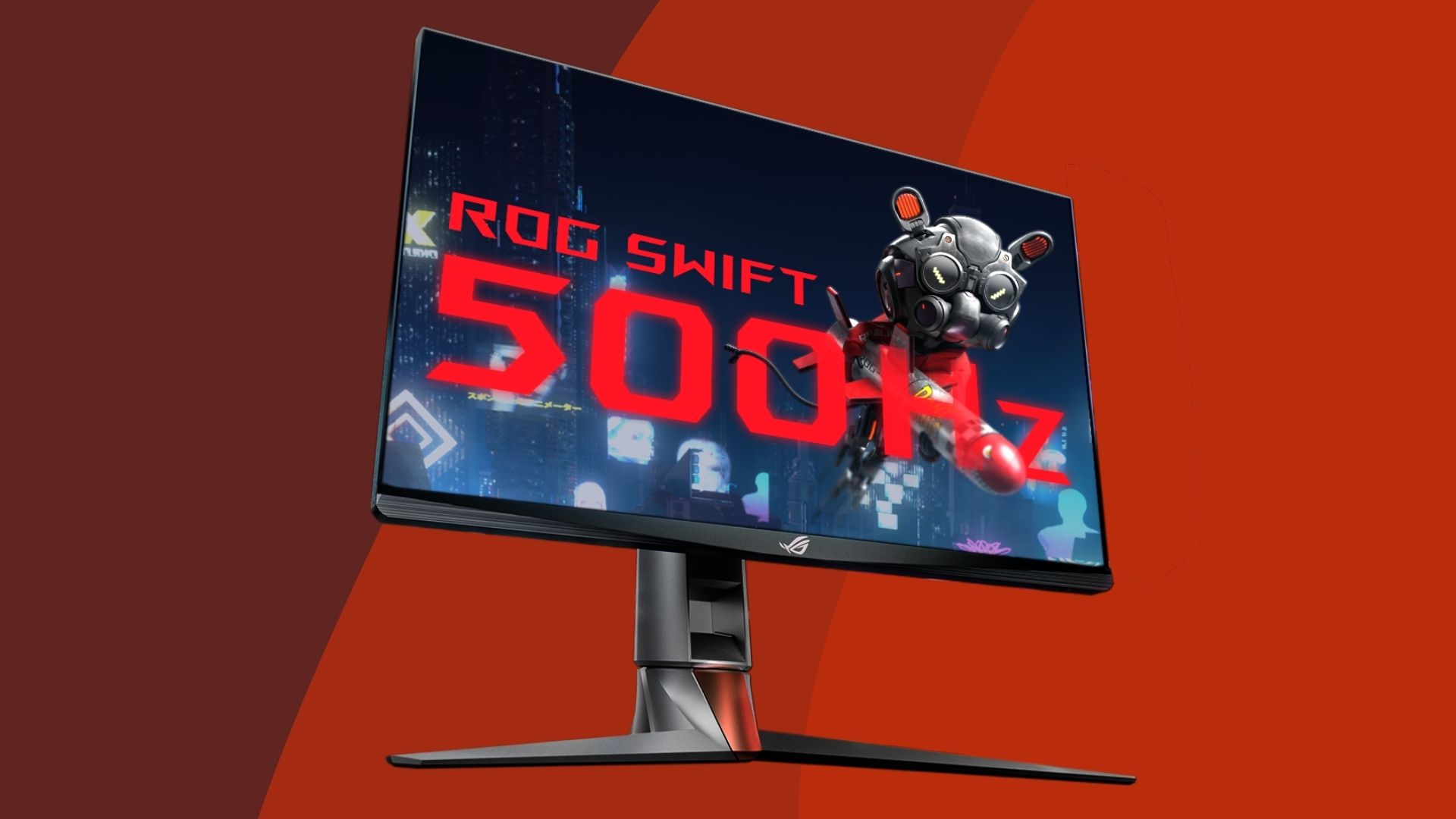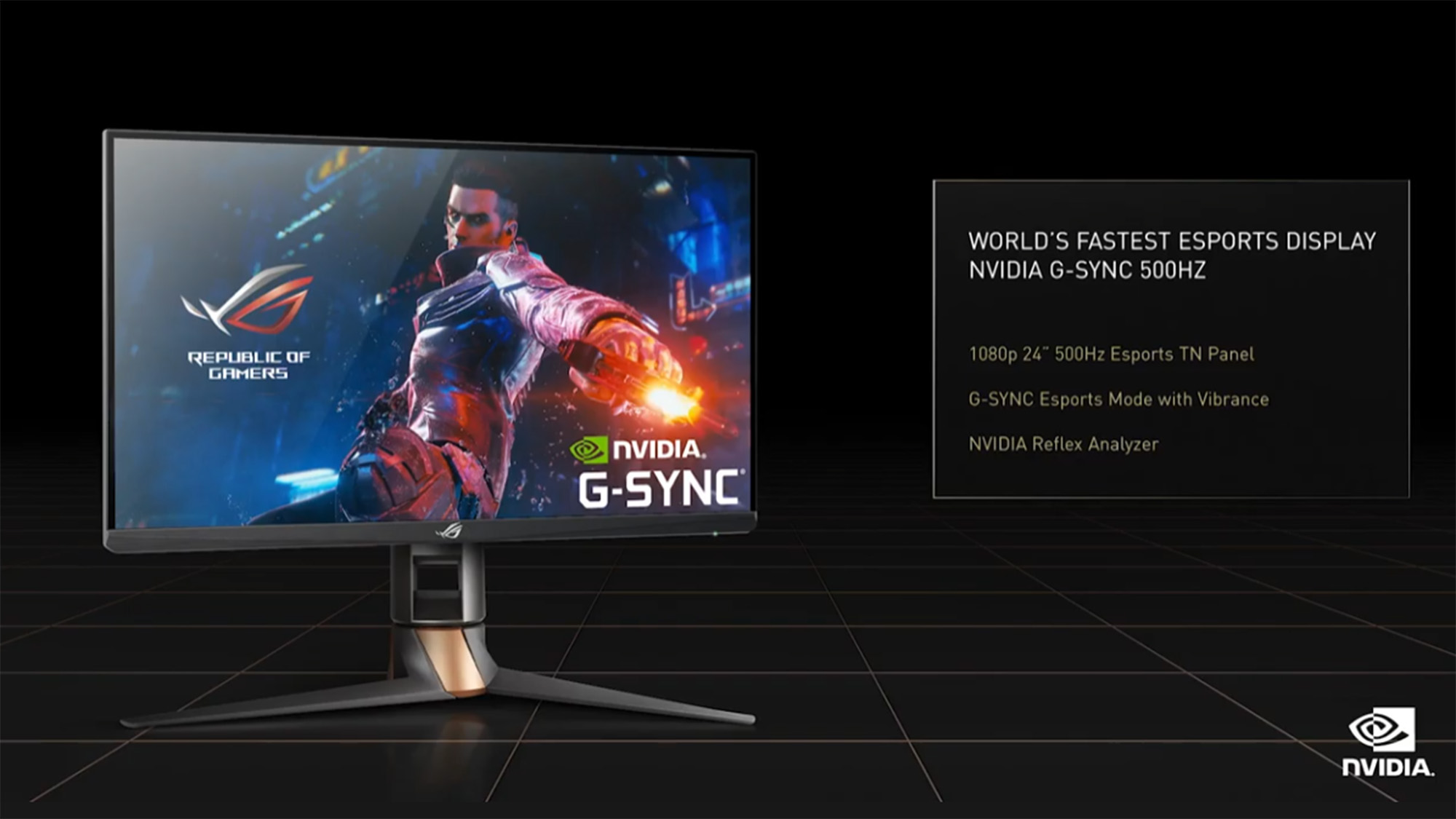Is there actually any point in a 500Hz gaming monitor?
Opinion: We're approaching the refresh rate glass ceiling

The Asus ROG Swift 500Hz gaming monitor was unveiled during Nvidia's keynote at Computex 2022, claimed to be the fastest display on the market. The product is a collaborative effort between the two companies, having historically also paired up to provide the ROG Swift 360Hz which was the previous 'world's fastest' gaming monitor back in 2020.
Introduced as the "lowest latency, highest refresh rate G-sync esports display ever created" in the announcement, the Asus Rog Swift 500Hz is rocking a 1080p resolution 24-inch screen with a brand new TN panel.
This is very much a display for folks who exclusively play competitive esports titles. TN panels are very low latency but use pretty dated technology by modern display standards as a tradeoff; you're sacrificing display quality for speed. But the market is hardly lacking in options for those of you who want something with both a high refresh rate and resolution.
The monitor also comes with a G-Sync Esports mode and also adopts Nvidia's Reflex Analyzer technology. There's no word on pricing or a release date for the Asus ROG Swift 500Hz, but we're betting that it won't be cheap to own the fastest gaming display on the market. We have a list of our favorite gaming monitors if you like to lay out some options, but our top recommendation for the best of both worlds is the Samsung Odyssey G7.
Eye can hardly believe these speeds
Most 1080p and 1440p gaming displays tend to sit between 144Hz and 240Hz, though 4K screens more commonly offer 60 Hz, so this is a pretty significant step up from what we currently have on the market.
It's worth noting for those who are unaware, but the refresh rate of your display isn't the same as your framerate. Refresh rate is actually a measure of how many frames a monitor can refresh every second, while frames-per-second (or FPS) is the ability of the graphics card to draw a number of frames on the display each second.
Essentially, if you have a 60Hz display, the maximum framerate you can achieve is 60 FPS, even if your graphics card is capable of much higher.
There has been an argument swimming around online for years now that high refresh rates start to become harder to detect the faster they are, and while some people claim to see up to 240 FPS, it's widely accepted that the human eye can only see 60 FPS.
But then, why do we need 120Hz/144Hz monitors if the human eye can't see beyond 60 FPS? In short, it's because your brain is doing most of the hard work, not your eyes.
Appeal is limited to esports professionals

The eye transmits information to the brain, which means that you can generally detect that things are smoother if you jump from a 60Hz display to a 144Hz display, though it's much harder to notice the difference between 144Hz and 240Hz.
From personal experience, I found that I couldn't detect any real difference in quality between 240Hz and 360Hz either. Which begs the question: what's the point of a 500Hz display? The percentage of the population who will actually reap the benefits is minuscule, if it even exists at all, and many gamers are running hardware that might not even be capable of producing 500 FPS in their favorite games.
I don't want to discredit that 500Hz isn't a significant milestone, but at what point does refresh rate start to become irrelevant? Can we actually see the difference between this and 360Hz? Perhaps some of the top professional esports players could prove me wrong, but there has to be a point where all this development is a waste of time, hindered by the limitations of our own fragile meat prison.
One thing I do know is that this likely won't be the monitor of choice for most people. Asus ROG hardware can be on the premium side (balanced out by its more budget TUF range), which suggests that the price tag for the ROG Swift 500Hz could be pretty eyewatering, and that's going to be hard to justify to everyday gamers who can't see the benefits.
144Hz and 240Hz both feel like the sweet spot, so if you're in the market for a new display, these are the refresh rates that you'll see a noticeable difference in if you're upgrading from a 60Hz display. We will reserve judgment until we can review the world's fastest gaming monitor ourselves, but that glass ceiling does appear to be getting ever more visible for refresh rate innovation.
- This year, Computex is once again virtual, but we'll still be bringing you all the breaking computing news and launches as they happen, so make sure you check out all of TechRadar's Computex 2022 coverage.
Get daily insight, inspiration and deals in your inbox
Sign up for breaking news, reviews, opinion, top tech deals, and more.
Jess is a former TechRadar Computing writer, where she covered all aspects of Mac and PC hardware, including PC gaming and peripherals. She has been interviewed as an industry expert for the BBC, and while her educational background was in prosthetics and model-making, her true love is in tech and she has built numerous desktop computers over the last 10 years for gaming and content creation. Jess is now a journalist at The Verge.
